Are you fascinated by space exploration and curious about the incredible speeds achieved by space shuttles? If you’re planning a trip to Vietnam and pondering the wonders of the universe, SIXT.VN is here to guide you through both earthly and celestial journeys. Let’s delve into the captivating world of space travel and discover just how fast these remarkable vehicles can fly, unlocking insights into space travel and orbital mechanics. Explore Vietnam with SIXT.VN for seamless travel, and then explore the cosmos with us, delving into fascinating topics like orbital velocity, g-forces, and escape velocity.
1. What is the Typical Speed of a Space Shuttle in Orbit?
A space shuttle typically travels at approximately 17,500 miles per hour (28,000 kilometers per hour) while in orbit around the Earth. This mind-boggling velocity is necessary to counteract Earth’s gravity and maintain a stable orbit.
Maintaining such high speeds is essential for a space shuttle to stay in orbit. The balance between the shuttle’s velocity and Earth’s gravitational pull keeps it from either falling back to Earth or drifting off into space. Achieving and maintaining this speed requires significant energy and precise calculations. According to NASA, the Space Shuttle Main Engines (SSMEs), in conjunction with the Solid Rocket Boosters (SRBs), provided the thrust to lift the Orbiter off the ground for the initial ascent. The main engines continued to operate for 8.5 minutes after launch, accelerating the Shuttle from 3,000 mph to over 17,000 mph in just six minutes to reach orbit. When planning your travels in Vietnam, remember that SIXT.VN offers reliable and efficient transport solutions to make your journey just as smooth.
2. What Factors Influence a Space Shuttle’s Speed?
Several factors influence a space shuttle’s speed, including:
- Altitude: The higher the altitude, the slower the required orbital speed.
- Earth’s Gravity: Gravity constantly pulls the shuttle towards Earth, requiring continuous high speed to stay in orbit.
- Engine Thrust: The thrust generated by the shuttle’s engines determines its acceleration and ability to reach and maintain orbital speed.
- Atmospheric Drag: Although minimal in higher orbits, atmospheric drag can slow the shuttle down over time.
Understanding these factors is crucial for mission planning. For example, the altitude affects the orbital period and the amount of energy required to maintain orbit. Engine thrust is critical for overcoming gravity and atmospheric drag. According to research from the American Institute of Aeronautics and Astronautics, altitude and engine performance are key factors in maintaining a stable orbit. If you’re planning your trip to Vietnam, rely on SIXT.VN for dependable and comfortable transportation options tailored to your needs.
3. How Does a Space Shuttle Achieve Such High Speeds?
A space shuttle achieves its high speeds through a combination of powerful engines and strategic maneuvers.
- Initial Ascent: The Solid Rocket Boosters (SRBs) and Space Shuttle Main Engines (SSMEs) provide the initial thrust to escape Earth’s gravity. NASA notes that the SRBs operate in parallel with the main engines for the first two minutes of flight, providing the additional thrust needed for the Orbiter to escape Earth’s gravitational pull.
- Orbital Insertion: Once in space, the Orbital Maneuvering System (OMS) is used to fine-tune the shuttle’s trajectory and achieve the desired orbital speed.
- Sustained Thrust: The engines continue to provide sustained thrust to maintain the required speed and counteract any drag.
The process of achieving these speeds involves precise engineering and careful calculations. The engines must deliver the right amount of thrust at the right time to ensure a successful orbit. SIXT.VN ensures you experience similar precision and reliability in your travels around Vietnam, providing peace of mind and comfort.
4. What is the Role of the Space Shuttle Main Engines (SSMEs) in Achieving High Speeds?
The Space Shuttle Main Engines (SSMEs) play a vital role in achieving the high speeds required for space travel.
- High Thrust: The SSMEs provide significant thrust, enabling the shuttle to accelerate from launch speed to orbital speed in a matter of minutes. NASA confirms that after the solid rockets are jettisoned, the main engines provide thrust which accelerates the Shuttle from 3,000 mph to over 17,000 mph in just six minutes to reach orbit.
- Efficient Fuel Consumption: The SSMEs are designed to efficiently burn liquid hydrogen and liquid oxygen, providing maximum thrust with minimal fuel consumption.
- Throttling Capability: The engines can be throttled to adjust the thrust level, allowing for precise control during ascent and orbital maneuvers.
The SSMEs are a marvel of engineering, designed to operate under extreme conditions and deliver the performance needed for successful space missions. For reliable and efficient transportation services in Vietnam, SIXT.VN offers a range of solutions to meet your travel needs, ensuring you reach your destinations safely and on time.
5. How Does the Orbital Maneuvering System (OMS) Contribute to Speed Adjustment?
The Orbital Maneuvering System (OMS) is crucial for adjusting the speed of a space shuttle in orbit.
- Fine-Tuning Velocity: The OMS allows for precise adjustments to the shuttle’s velocity, enabling it to reach the desired orbit and rendezvous with other spacecraft or space stations.
- Orbital Corrections: The OMS is used to make small corrections to the shuttle’s orbit, ensuring it stays on course and maintains the correct altitude.
- Deorbit Burns: At the end of a mission, the OMS is used to perform a deorbit burn, slowing the shuttle down enough to begin its descent back to Earth.
The OMS is essential for the flexibility and precision required in space missions. It allows the shuttle to perform a variety of tasks, from deploying satellites to conducting experiments in orbit. When planning your travels in Vietnam, SIXT.VN offers flexible and convenient transportation options, allowing you to explore the country at your own pace and according to your specific needs.
6. What is the Impact of G-Forces on Astronauts During High-Speed Travel?
G-forces have a significant impact on astronauts during high-speed travel.
- Physical Stress: High G-forces can put considerable stress on the human body, affecting blood flow and making it difficult to breathe.
- Training and Conditioning: Astronauts undergo extensive training to prepare their bodies for the effects of G-forces, including exercises to strengthen their cardiovascular systems.
- Protective Measures: Special suits and seating are used to help astronauts withstand the effects of G-forces during launch and reentry.
Understanding and mitigating the impact of G-forces is crucial for ensuring the safety and well-being of astronauts during space missions. According to studies by the Aerospace Medical Association, proper training and protective equipment can significantly reduce the risks associated with high G-forces. Just as astronauts prepare for the challenges of space travel, SIXT.VN prepares to offer you the best service for your travel in Vietnam, ensuring comfort and safety.
7. How Does Atmospheric Drag Affect a Space Shuttle’s Speed in Orbit?
Atmospheric drag, although minimal in higher orbits, can still affect a space shuttle’s speed over time.
- Slowing Down: Even in the vacuum of space, there are still trace amounts of atmosphere that can create drag on the shuttle, gradually slowing it down.
- Altitude Loss: As the shuttle slows down, it loses altitude, requiring periodic boosts to maintain its orbit.
- Mission Planning: Mission planners must account for atmospheric drag when calculating fuel requirements and mission duration.
The effects of atmospheric drag are more pronounced in lower orbits, where the atmosphere is denser. This is why satellites in low Earth orbit require regular adjustments to maintain their altitude. With SIXT.VN, you can be assured of efficient and timely services, much like the meticulous planning required to maintain a space shuttle’s orbit.
8. What is the Escape Velocity Needed for a Space Shuttle to Leave Earth’s Orbit?
The escape velocity needed for a space shuttle to leave Earth’s orbit is approximately 25,000 miles per hour (40,270 kilometers per hour).
- Overcoming Gravity: Escape velocity is the speed required to overcome Earth’s gravitational pull and travel into deep space.
- Energy Requirements: Achieving escape velocity requires a significant amount of energy, typically provided by powerful rockets.
- Interplanetary Travel: Once a spacecraft reaches escape velocity, it can travel to other planets or destinations in the solar system.
Reaching escape velocity is a major milestone in space exploration, enabling spacecraft to explore the far reaches of the solar system and beyond. According to the Jet Propulsion Laboratory (JPL), achieving escape velocity requires careful planning and precise execution of engine burns. Just as reaching escape velocity requires precise execution, SIXT.VN ensures that your transportation needs in Vietnam are met with accuracy and attention to detail, providing a smooth and reliable service.
9. How Do Space Shuttle Landings Account for High Orbital Speeds?
Space shuttle landings are carefully planned to account for the high orbital speeds at which the shuttle travels.
- Deorbit Burn: The shuttle performs a deorbit burn using the OMS to slow down and begin its descent.
- Atmospheric Entry: As the shuttle enters the atmosphere, it uses its heat shield to protect itself from the extreme temperatures generated by air friction.
- Controlled Descent: The shuttle uses its aerodynamic surfaces to control its descent and glide towards the landing strip.
- Precision Landing: The shuttle lands on a long runway, using a drag chute to slow down and come to a stop.
The landing process is a complex and challenging maneuver that requires precise coordination and skill. The shuttle must accurately navigate through the atmosphere and land within a narrow margin of error. Similarly, SIXT.VN focuses on providing precise and reliable services to ensure your travel within Vietnam is smooth and stress-free, allowing you to focus on enjoying your trip.
10. What Technologies Enable Space Shuttles to Withstand High Speeds and Extreme Conditions?
Several key technologies enable space shuttles to withstand high speeds and extreme conditions.
- Heat Shield: The heat shield protects the shuttle from the intense heat generated during atmospheric entry. NASA states that the heat shield is made of special materials that can withstand temperatures of up to 3,000 degrees Fahrenheit (1,650 degrees Celsius).
- Aerodynamic Design: The shuttle’s aerodynamic shape allows it to glide through the atmosphere with minimal resistance.
- Thermal Protection System (TPS): The TPS insulates the shuttle from extreme temperatures in space and during reentry.
- Advanced Materials: The shuttle is constructed from lightweight, yet strong materials that can withstand the stresses of high-speed flight.
These technologies are essential for ensuring the safety and success of space shuttle missions. They allow the shuttle to operate in the harsh environment of space and return safely to Earth. Just as these technologies protect the space shuttle, SIXT.VN ensures the safety and comfort of your travels in Vietnam, offering well-maintained vehicles and professional service.
11. What Were the Top Speeds Achieved by the Space Shuttle Program?
The Space Shuttle program consistently achieved top speeds of approximately 17,500 miles per hour (28,000 kilometers per hour) while in orbit.
- Orbital Velocity: This speed was necessary to maintain a stable orbit around Earth.
- Mission Requirements: The speed was consistent across all missions, as it was dictated by the requirements of orbital mechanics.
- Technological Limits: The speed was also limited by the capabilities of the shuttle’s engines and the need to conserve fuel.
While the shuttle could theoretically achieve higher speeds with increased engine power, the practical constraints of mission requirements and technological limitations kept the top speed consistent. When planning your travels in Vietnam, SIXT.VN offers consistent and reliable services to ensure your trip goes smoothly, providing a stable and dependable travel experience.
12. How Does the Speed of a Space Shuttle Compare to Other Spacecraft?
The speed of a space shuttle is comparable to other spacecraft in low Earth orbit (LEO).
- International Space Station (ISS): The ISS also orbits at approximately 17,500 miles per hour.
- Satellites: Most satellites in LEO travel at similar speeds to maintain their orbits.
- Deep Space Probes: Spacecraft traveling to other planets can reach much higher speeds, often exceeding 30,000 miles per hour.
The speed of a spacecraft is largely determined by its mission and orbital requirements. Spacecraft in LEO need to maintain a specific speed to stay in orbit, while those traveling to distant destinations require much higher speeds to escape Earth’s gravity. Regardless of your destination, SIXT.VN ensures a comfortable journey in Vietnam, offering top-notch services to make your travel experience exceptional.
13. Can the Speed of a Space Shuttle Vary During a Mission?
Yes, the speed of a space shuttle can vary during a mission, although these variations are typically small and controlled.
- Orbital Adjustments: The OMS is used to make small adjustments to the shuttle’s speed to change its orbit or rendezvous with other spacecraft.
- Atmospheric Drag: Atmospheric drag can cause the shuttle to slow down slightly, requiring periodic boosts to maintain its speed.
- Deorbit Burn: The shuttle’s speed is significantly reduced during the deorbit burn to begin its descent back to Earth.
While the shuttle generally maintains a consistent speed while in orbit, small adjustments are necessary to achieve mission objectives and compensate for environmental factors. Just as the speed of a space shuttle can vary during a mission, SIXT.VN offers adaptable and personalized services to meet your changing travel needs in Vietnam, ensuring flexibility and convenience throughout your journey.
14. What Instruments and Technologies Are Used to Measure a Space Shuttle’s Speed?
Several instruments and technologies are used to measure a space shuttle’s speed.
- Inertial Measurement Units (IMUs): IMUs use accelerometers and gyroscopes to measure the shuttle’s acceleration and orientation, which can be used to calculate its speed.
- Global Positioning System (GPS): GPS receivers track the shuttle’s position and velocity by communicating with a network of satellites.
- Doppler Radar: Doppler radar measures the shuttle’s speed by bouncing radio waves off the ground and measuring the frequency shift.
- Star Trackers: Star trackers use the positions of stars to determine the shuttle’s orientation and velocity.
These instruments provide accurate and reliable measurements of the shuttle’s speed, allowing mission controllers to monitor its trajectory and make necessary adjustments. Similar to the precision instruments used to measure a space shuttle’s speed, SIXT.VN employs advanced technology to ensure accurate and timely service, providing you with the best possible travel experience in Vietnam.
15. How Did the Design of the Space Shuttle Contribute to Its High-Speed Capabilities?
The design of the space shuttle significantly contributed to its high-speed capabilities.
- Aerodynamic Shape: The shuttle’s aerodynamic shape allowed it to travel through the atmosphere with minimal resistance, enabling it to reach high speeds.
- Lightweight Materials: The shuttle was constructed from lightweight, yet strong materials, reducing its mass and allowing it to accelerate more quickly.
- Powerful Engines: The SSMEs and SRBs provided the necessary thrust to overcome Earth’s gravity and reach orbital speeds.
- Thermal Protection System: The TPS protected the shuttle from the extreme temperatures generated during high-speed flight through the atmosphere.
The design of the space shuttle was a marvel of engineering, incorporating advanced technologies and materials to achieve its high-speed capabilities. Just as the design of the space shuttle was crucial to its success, SIXT.VN is designed to offer you the best travel services in Vietnam, combining comfort, reliability, and efficiency to ensure a memorable journey.
16. What Role Did Computers Play in Managing the Space Shuttle’s High Speed?
Computers played a critical role in managing the space shuttle’s high speed and overall mission.
- Flight Control: Onboard computers managed the shuttle’s flight control systems, including engine thrust, aerodynamic surfaces, and orbital maneuvers.
- Navigation: Computers used data from IMUs, GPS, and star trackers to calculate the shuttle’s position, velocity, and orientation.
- Monitoring: Computers monitored the shuttle’s systems, including engine performance, fuel consumption, and environmental conditions.
- Automation: Computers automated many tasks, reducing the workload on the astronauts and improving the efficiency of the mission.
Without computers, it would have been impossible to manage the complexity of a space shuttle mission and ensure its success. According to the Charles Babbage Institute, the computers used in the Space Shuttle program were some of the most advanced of their time, enabling precise control and monitoring of the vehicle’s systems. With SIXT.VN, managing your travel in Vietnam is as easy as managing a space shuttle with advanced computers. From booking to navigation, SIXT.VN ensures a smooth and efficient travel experience, thanks to our advanced technology and dedication to service.
17. How Does the Space Shuttle’s Speed Affect Time Dilation for Astronauts?
The space shuttle’s high speed does affect time dilation for astronauts, albeit by a tiny amount, as predicted by Einstein’s theory of relativity.
- Time Dilation: According to relativity, time slows down for objects moving at high speeds relative to a stationary observer.
- Small Effect: At the space shuttle’s speed of 17,500 miles per hour, the effect of time dilation is very small, amounting to a few milliseconds over the course of a mission.
- Measurable: While the effect is small, it is measurable with precise atomic clocks.
Although the time dilation experienced by astronauts on the space shuttle is minimal, it is a real phenomenon that has been confirmed by scientific experiments. According to research from the National Institute of Standards and Technology (NIST), the effects of relativity must be taken into account in precise timekeeping and navigation systems. While you might not experience time dilation during your travels in Vietnam, SIXT.VN ensures that your journey is smooth and efficient, making the most of your time with prompt and reliable service.
18. How Does the High Speed of a Space Shuttle Impact Communication with Earth?
The high speed of a space shuttle can impact communication with Earth in several ways.
- Doppler Shift: The shuttle’s speed causes a Doppler shift in the radio signals used for communication, which must be compensated for by ground stations.
- Signal Delay: The distance between the shuttle and Earth, combined with the speed of light, causes a delay in communication signals.
- Antenna Tracking: Ground stations must continuously track the shuttle as it orbits the Earth to maintain a strong communication link.
- Atmospheric Interference: The Earth’s atmosphere can interfere with radio signals, especially at certain frequencies.
Despite these challenges, NASA has developed sophisticated communication systems that allow for reliable communication with the space shuttle throughout its mission. Similarly, SIXT.VN ensures reliable communication and support throughout your travels in Vietnam, making it easy to coordinate your transportation and address any questions or concerns you may have.
19. How Was the Knowledge Gained from the Space Shuttle Program Applied to Other Spacecraft?
The knowledge gained from the Space Shuttle program has been applied to many other spacecraft and space missions.
- Heat Shield Technology: The heat shield technology developed for the space shuttle has been used in other spacecraft to protect them during atmospheric entry.
- Engine Design: The design of the SSMEs has influenced the development of other rocket engines.
- Flight Control Systems: The flight control systems used in the space shuttle have been adapted for use in other spacecraft.
- Mission Planning: The experience gained from planning and executing space shuttle missions has been applied to other space missions.
The Space Shuttle program was a valuable source of knowledge and innovation that has benefited the entire space community. According to a report by the National Research Council, the Space Shuttle program made significant contributions to our understanding of spaceflight and has helped to advance space technology. Just as the knowledge from the Space Shuttle program has advanced space technology, SIXT.VN is committed to continuous improvement and innovation, ensuring that you benefit from the latest advancements in transportation services in Vietnam.
20. What Safety Measures Were in Place to Handle the Risks Associated with the Space Shuttle’s High Speed?
Numerous safety measures were in place to handle the risks associated with the Space Shuttle’s high speed.
- Redundant Systems: The shuttle had redundant systems for critical functions, such as flight control and engine management, to ensure that the mission could continue even if one system failed.
- Rigorous Testing: The shuttle and its components underwent rigorous testing to ensure that they could withstand the stresses of high-speed flight.
- Crew Training: Astronauts underwent extensive training to prepare them for the challenges of flying the shuttle and to handle emergency situations.
- Mission Control: Mission control continuously monitored the shuttle’s systems and provided support to the crew throughout the mission.
Despite these safety measures, the Space Shuttle program was not without risk, as tragically demonstrated by the Challenger and Columbia disasters. However, NASA learned valuable lessons from these tragedies and implemented additional safety measures to reduce the risk of future accidents. SIXT.VN prioritizes your safety above all else. We ensure that our vehicles are regularly inspected and maintained, and our drivers are professionally trained to handle all road conditions.
21. How Did the Space Shuttle’s High Speed Contribute to Its Scientific Achievements?
The Space Shuttle’s high speed was crucial to its scientific achievements, enabling it to conduct research and deploy equipment in orbit.
- Orbital Research: The shuttle’s ability to reach and maintain high speeds in orbit allowed scientists to conduct experiments in a microgravity environment.
- Satellite Deployment: The shuttle’s high speed allowed it to deploy satellites into precise orbits around the Earth.
- Space Telescope Servicing: The shuttle’s high speed enabled it to rendezvous with and service the Hubble Space Telescope.
- Earth Observation: The shuttle’s high speed allowed it to observe the Earth from a unique vantage point, providing valuable data for climate research and disaster monitoring.
The Space Shuttle’s high speed was essential for its success as a scientific platform, enabling it to make significant contributions to our understanding of the universe and our planet. According to NASA’s Office of STEM Engagement, the scientific achievements of the Space Shuttle program have had a lasting impact on our understanding of the Earth and the cosmos. Similarly, SIXT.VN strives to enhance your understanding and appreciation of Vietnam by providing seamless transportation to various cultural and historical sites, contributing to your overall learning experience.
22. What Innovations Arose from the Need to Manage the Space Shuttle’s High-Speed Re-entry?
Managing the Space Shuttle’s high-speed re-entry required significant innovation, leading to advancements in materials science and aerodynamics.
- Advanced Heat Shields: The development of heat shields capable of withstanding extreme temperatures during re-entry led to innovations in ceramic and composite materials.
- Aerodynamic Design: The shuttle’s unique shape was designed to dissipate heat and maintain stability during re-entry, leading to new insights in aerodynamics.
- Flight Control Systems: Advanced flight control systems were developed to precisely manage the shuttle’s trajectory during re-entry.
- Thermal Management: Innovations in thermal management techniques were necessary to protect the shuttle’s internal components from the intense heat generated during re-entry.
The challenges of managing the Space Shuttle’s high-speed re-entry spurred significant innovation in engineering and materials science, benefiting other areas of technology. According to the U.S. Air Force Research Laboratory, the technologies developed for the Space Shuttle’s re-entry have been applied to a wide range of aerospace applications. Just as the re-entry challenges led to innovations, SIXT.VN constantly seeks to innovate and improve our services, offering you the most advanced and reliable transportation solutions in Vietnam.
23. How Did International Collaboration Contribute to Managing the Space Shuttle’s High-Speed Missions?
International collaboration played a crucial role in managing the Space Shuttle’s high-speed missions, pooling resources and expertise from around the world.
- Space Station Cooperation: The Space Shuttle was used to transport equipment and personnel to the International Space Station, a joint project involving multiple countries.
- Scientific Research: International teams of scientists collaborated on experiments conducted aboard the Space Shuttle.
- Mission Support: Ground stations around the world provided support for Space Shuttle missions, tracking the vehicle and communicating with the crew.
- Technology Sharing: International partners shared technology and expertise to improve the safety and efficiency of Space Shuttle missions.
The Space Shuttle program was a testament to the power of international collaboration, demonstrating that nations can work together to achieve ambitious goals in space exploration. According to the United Nations Office for Outer Space Affairs, international cooperation is essential for the future of space exploration and the peaceful use of outer space. SIXT.VN embraces the spirit of international collaboration, providing services that cater to the diverse needs of travelers from around the world, ensuring a welcoming and inclusive experience for everyone visiting Vietnam.
24. What is the Future of High-Speed Space Travel After the Space Shuttle Program?
The future of high-speed space travel after the Space Shuttle program is focused on new technologies and approaches.
- Commercial Spaceflight: Companies like SpaceX and Blue Origin are developing new spacecraft capable of high-speed space travel.
- Advanced Propulsion Systems: Research is underway on advanced propulsion systems, such as ion engines and nuclear propulsion, that could enable even higher speeds.
- Reusable Spacecraft: The focus is on developing reusable spacecraft to reduce the cost of space travel and make it more accessible.
- Interplanetary Missions: Future high-speed space travel will likely be focused on missions to Mars and other destinations in the solar system.
The end of the Space Shuttle program marked a new era in space exploration, with commercial companies and government agencies working to develop the next generation of high-speed spacecraft. According to the Space Foundation, the future of space exploration is bright, with many exciting missions and discoveries on the horizon. Just as the future of space travel is full of potential, SIXT.VN is dedicated to continually improving and expanding our services, providing you with innovative and reliable transportation options that meet your evolving needs and preferences in Vietnam.
25. How Has the Study of the Space Shuttle’s Speed Influenced Travel on Earth?
The study of the Space Shuttle’s speed and related technologies has had a significant influence on travel here on Earth.
- Advanced Materials: The development of lightweight, high-strength materials for the Space Shuttle has led to their use in aircraft, automobiles, and other forms of transportation.
- Aerodynamics: The study of aerodynamics for the Space Shuttle has improved the design of vehicles, making them more fuel-efficient and safer.
- Navigation Systems: The navigation systems developed for the Space Shuttle have been adapted for use in GPS devices and other navigation technologies.
- Safety Technologies: Safety technologies developed for the Space Shuttle, such as advanced braking systems and crash-resistant materials, have been applied to terrestrial transportation.
The Space Shuttle program has had a lasting impact on our lives here on Earth, leading to advancements in transportation and other technologies that benefit everyone. According to the National Aeronautics and Space Administration (NASA), technologies developed for the Space Shuttle program have been transferred to many commercial applications, improving our quality of life. As a traveler, you can experience the benefits of space-age technology in Vietnam, such as smooth transportation and navigational support. SIXT.VN is inspired by the precision and attention to detail of space technology. From efficient booking to safe and comfortable rides, SIXT.VN integrates advanced technology to provide a seamless travel experience.
26. What Are Some Misconceptions About the Speed of a Space Shuttle?
There are several misconceptions about the speed of a space shuttle.
- Constant Acceleration: One misconception is that the shuttle constantly accelerates throughout its mission. In reality, it reaches orbital speed and then maintains that speed with occasional adjustments.
- Unlimited Speed: Another misconception is that the shuttle could travel at any speed. In reality, its speed is limited by the capabilities of its engines and the requirements of orbital mechanics.
- Instantaneous Speed Changes: Some people believe that the shuttle can change its speed instantaneously. In reality, it takes time and energy to accelerate or decelerate the shuttle.
- Similar to Airplane Speed: People may underestimate the true speed of a space shuttle, thinking it is comparable to that of an airplane. In reality, a space shuttle travels many times faster than an airplane.
Addressing these misconceptions can help to promote a better understanding of the challenges and achievements of space travel. While these misconceptions about space travel are intriguing, SIXT.VN ensures that your understanding of reliable travel is clear and accurate. We provide transparent services, so you know exactly what to expect and can rely on us for consistent quality.
27. How Do Scientists Calculate and Predict the Speed of a Space Shuttle?
Scientists use a combination of physics, mathematics, and computer simulations to calculate and predict the speed of a space shuttle.
- Newton’s Laws of Motion: Newton’s laws of motion are used to calculate the acceleration of the shuttle based on the thrust of its engines and the forces acting on it.
- Orbital Mechanics: Principles of orbital mechanics are used to predict the shuttle’s speed and trajectory as it orbits the Earth.
- Computer Simulations: Sophisticated computer simulations are used to model the complex interactions between the shuttle, its engines, and the Earth’s atmosphere.
- Telemetry Data: Telemetry data from the shuttle is used to refine the calculations and predictions in real-time.
By combining these tools and techniques, scientists can accurately calculate and predict the speed of a space shuttle throughout its mission. These calculations are based on principles of orbital mechanics developed over centuries. Similarly, SIXT.VN employs sophisticated tools to ensure seamless travel. Our customer support is available to assist you at every turn, providing clear and reliable information so you can enjoy a smooth journey.
28. How Can I Learn More About the Speed of Space Shuttles and Space Travel in General?
There are many resources available for learning more about the speed of space shuttles and space travel in general.
- NASA Website: The NASA website is a comprehensive source of information about the Space Shuttle program and other space missions.
- Science Museums: Science museums often have exhibits about space travel that can be both educational and entertaining.
- Books and Articles: There are many books and articles available about the Space Shuttle program and space travel.
- Documentaries: There are many documentaries about the Space Shuttle program that can provide a fascinating look at the challenges and achievements of space travel.
By exploring these resources, you can gain a deeper understanding of the speed of space shuttles and the wonders of space travel. These resources are invaluable for gaining accurate knowledge and a deeper appreciation for space exploration. While your interest in space exploration is piqued, SIXT.VN invites you to explore the wonders of Vietnam with ease and comfort. Let us take care of your travel needs so you can focus on discovering the beauty and culture of this fascinating country.
29. What Are Some Interesting Facts About the Speed of the Space Shuttle?
Here are some interesting facts about the speed of the Space Shuttle:
- The Space Shuttle traveled approximately 17,500 miles per hour in orbit.
- It took only about 8.5 minutes to reach this speed after launch.
- The engines burned a half-million gallons of liquid propellant during powered flight.
- The turbines spun almost 13 times as fast as an automobile engine.
- The engines generated over 37 million horsepower.
- The Space Shuttle’s exhaust was primarily water vapor.
- The Space Shuttle traveled more than 513 million miles over the course of the program.
- The total time spent in space by all Space Shuttle missions was more than 1,322 days.
These facts provide a glimpse into the remarkable achievements of the Space Shuttle program and the incredible speed at which these vehicles traveled. These intriguing facts highlight the sheer power and precision of space travel. Just as these facts capture your imagination, SIXT.VN is ready to make your experience memorable. From the moment you book with us, you can expect friendly and efficient service that will inspire you to explore all that Vietnam has to offer.
30. How Can SIXT.VN Help Me Plan My Trip to Explore Vietnam After Learning About Space Travel?
After learning about the incredible speeds of space shuttles, why not explore the beautiful landscapes of Vietnam with SIXT.VN?
- Airport Transfers: SIXT.VN offers reliable airport transfer services to ensure a smooth start to your trip.
- Car Rentals: Explore Vietnam at your own pace with our wide selection of rental cars.
- Hotel Bookings: Find the perfect accommodation for your stay with our hotel booking service.
- Tours and Activities: Discover the best of Vietnam with our curated tours and activities.
Let SIXT.VN take care of your travel needs so you can focus on enjoying your adventure in Vietnam. From the cosmos to the captivating landscapes of Vietnam, there’s always something new to explore.
Address: 260 Cau Giay, Hanoi, Vietnam
Hotline/WhatsApp: +84 986 244 358
Website: SIXT.VN
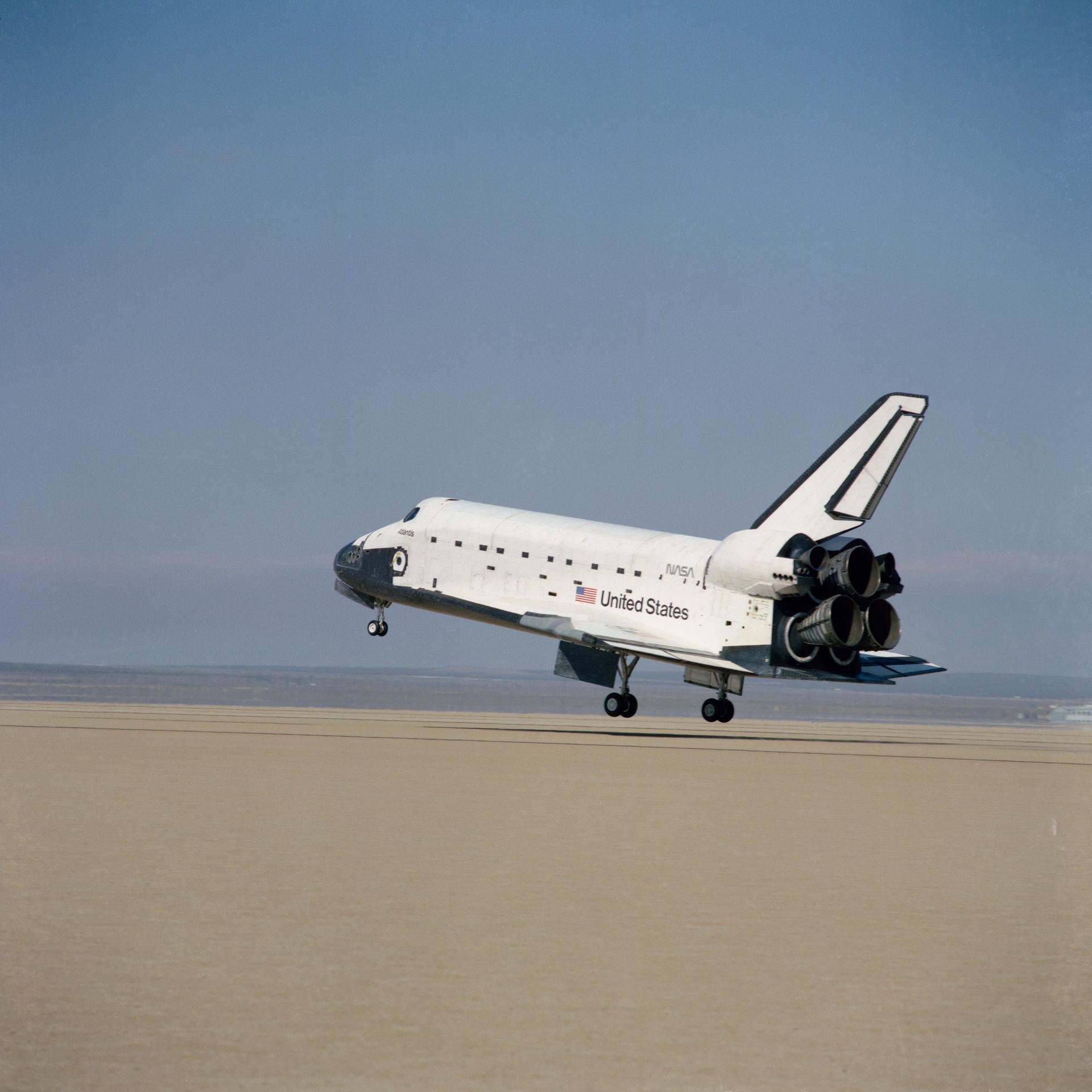 STS-36 Atlantis, Orbiter Vehicle (OV) 104, glides above Runway 23 at Edwards Air Force Base, California, showcasing its port side and space shuttle main engines (SSMEs).
STS-36 Atlantis, Orbiter Vehicle (OV) 104, glides above Runway 23 at Edwards Air Force Base, California, showcasing its port side and space shuttle main engines (SSMEs).
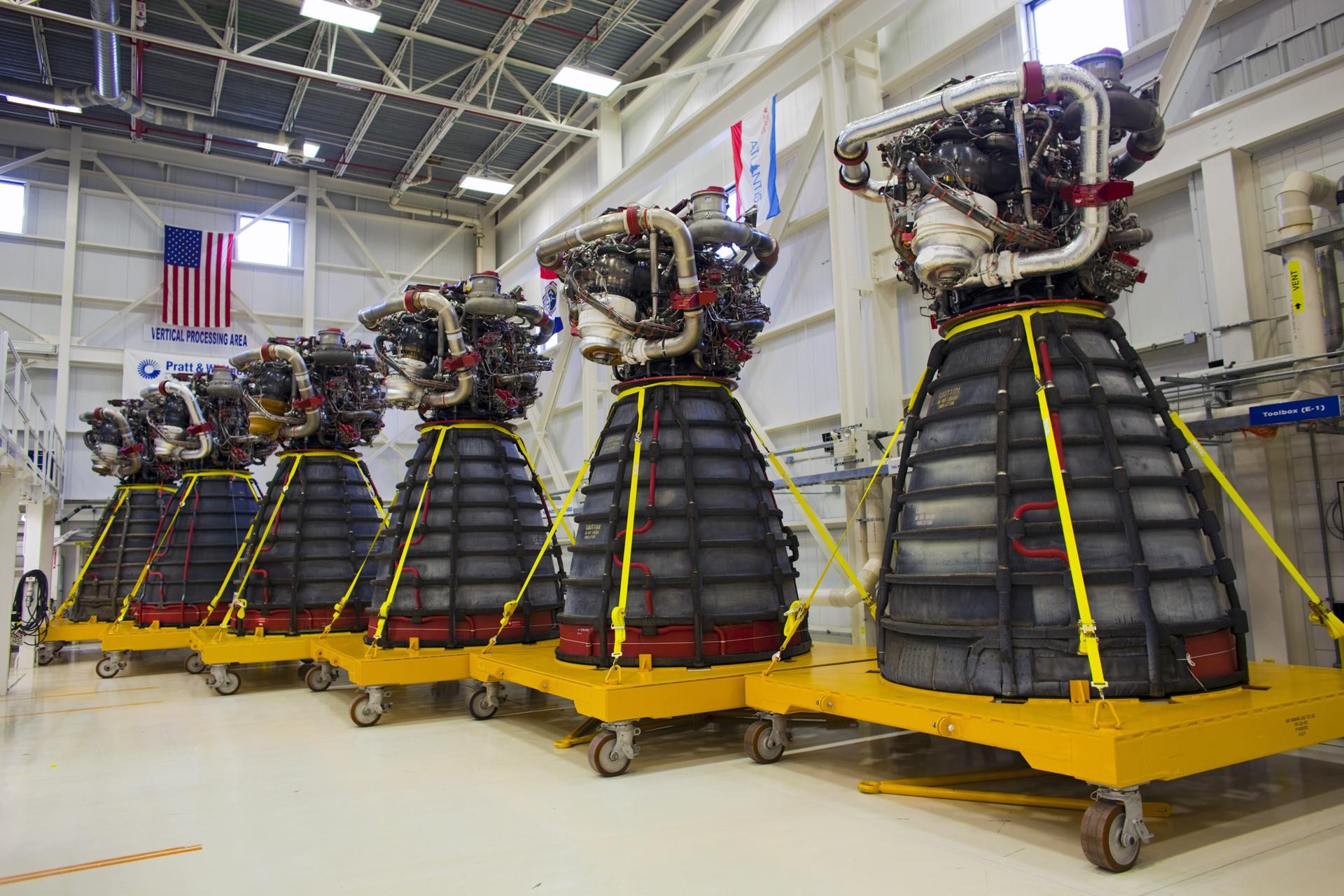 Six Pratt Whitney Rocketdyne space shuttle main engines (SSMEs) from space shuttle Endeavour’s STS-134 and space shuttle Atlantis’ STS-135 missions inside the Engine Shop at NASA’s Kennedy Space Center in Florida.
Six Pratt Whitney Rocketdyne space shuttle main engines (SSMEs) from space shuttle Endeavour’s STS-134 and space shuttle Atlantis’ STS-135 missions inside the Engine Shop at NASA’s Kennedy Space Center in Florida.
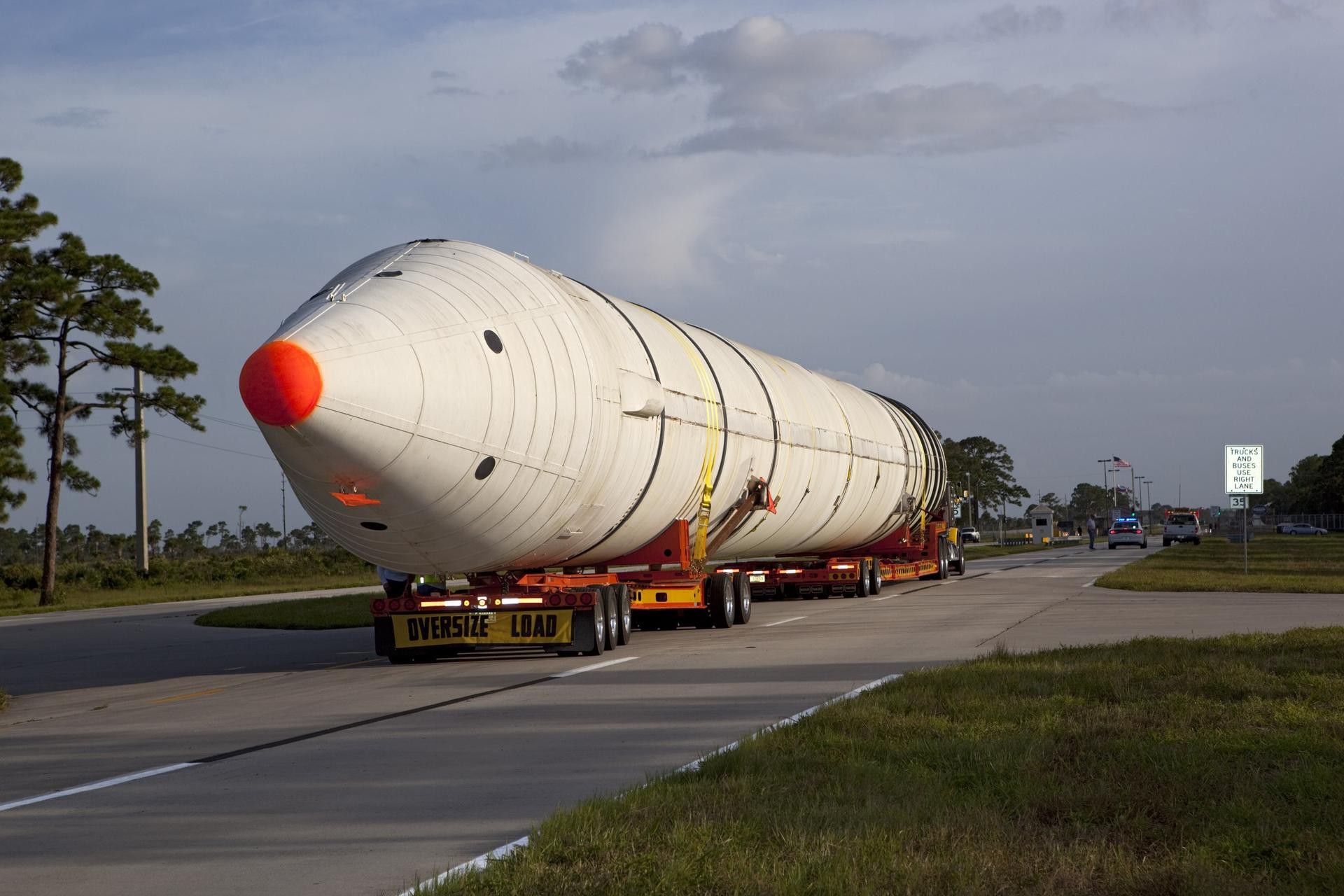 A space shuttle solid rocket booster is transported by truck to the California Science Center in Los Angeles, where the 149-foot SRBs will be displayed.
A space shuttle solid rocket booster is transported by truck to the California Science Center in Los Angeles, where the 149-foot SRBs will be displayed.
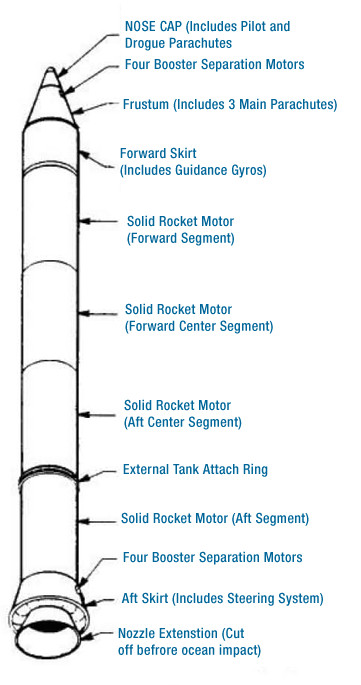 Diagram illustrating the components and functionalities of a Solid Rocket Booster (SRB) in space shuttle missions.
Diagram illustrating the components and functionalities of a Solid Rocket Booster (SRB) in space shuttle missions.
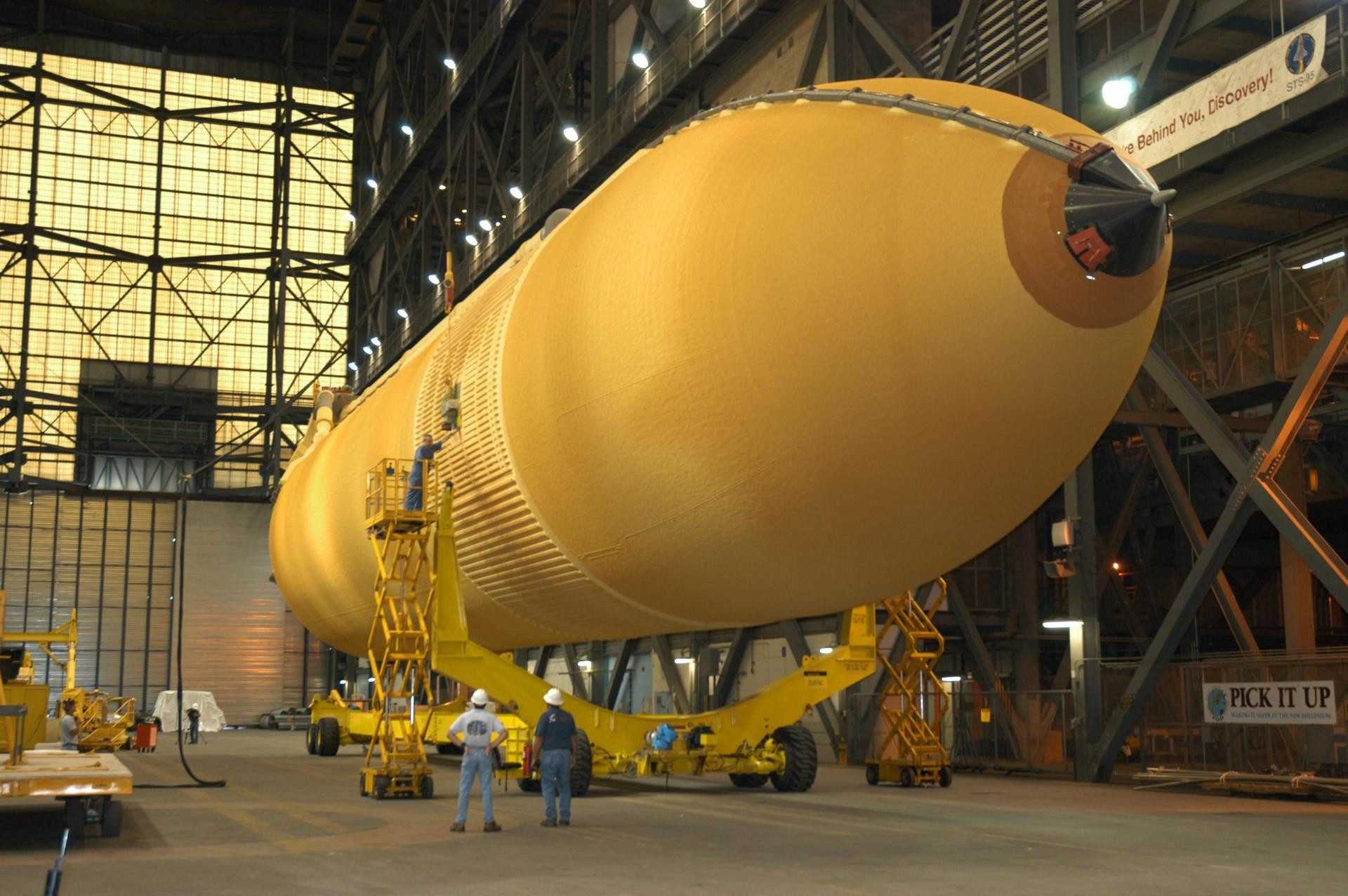 Workers in the transfer aisle of the Vehicle Assembly Building check the progress of External Tank 118 (ET-118) as it is lowered onto the transporter below it.
Workers in the transfer aisle of the Vehicle Assembly Building check the progress of External Tank 118 (ET-118) as it is lowered onto the transporter below it.
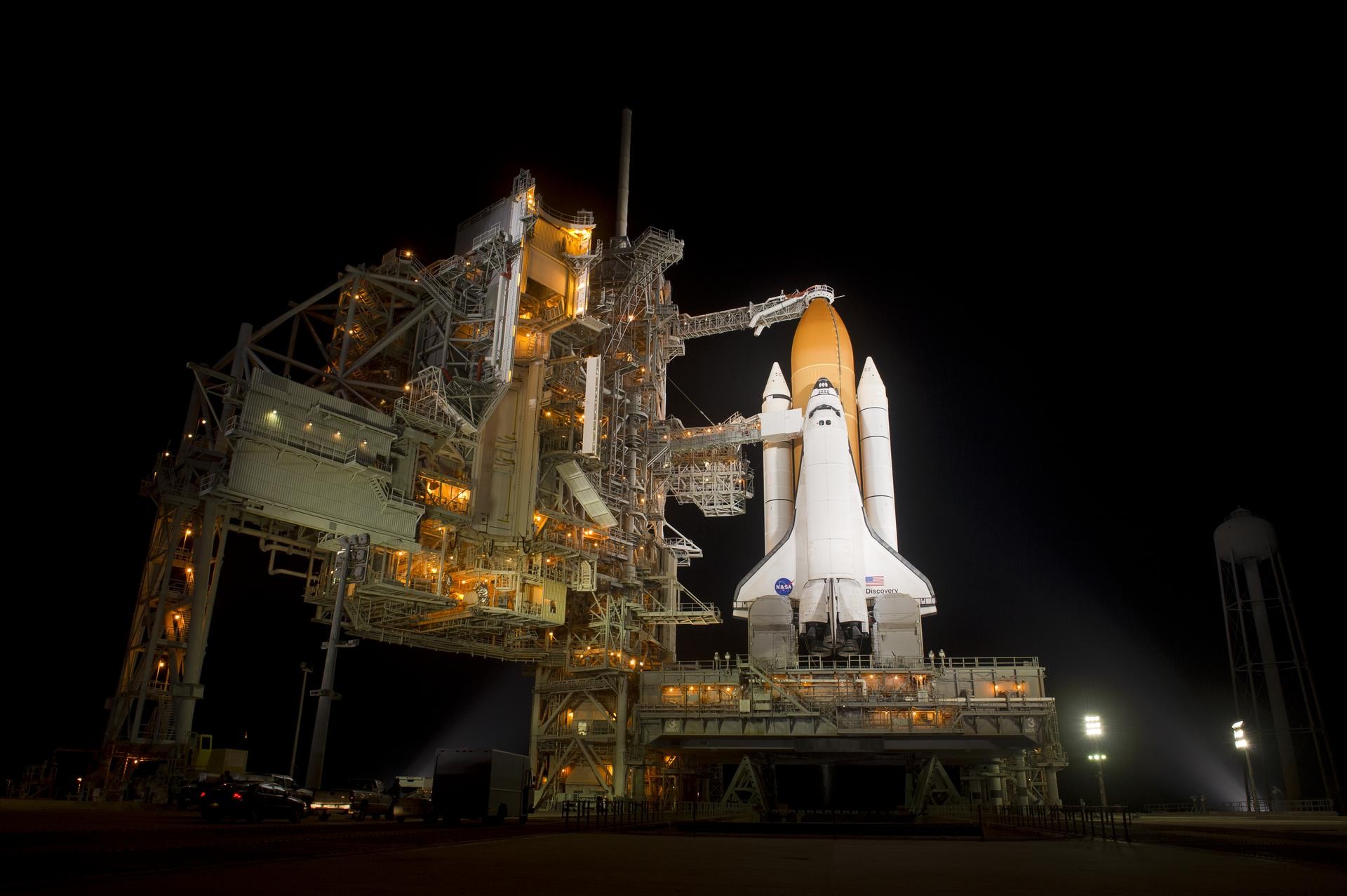 The space shuttle Discovery is seen on launch Pad 39a after the Rotating Service Structure (RSS) is rolled back on Wednesday, Nov. 3, 2010 at the NASA Kennedy Space Center in Cape Canaveral, Fla.
The space shuttle Discovery is seen on launch Pad 39a after the Rotating Service Structure (RSS) is rolled back on Wednesday, Nov. 3, 2010 at the NASA Kennedy Space Center in Cape Canaveral, Fla.
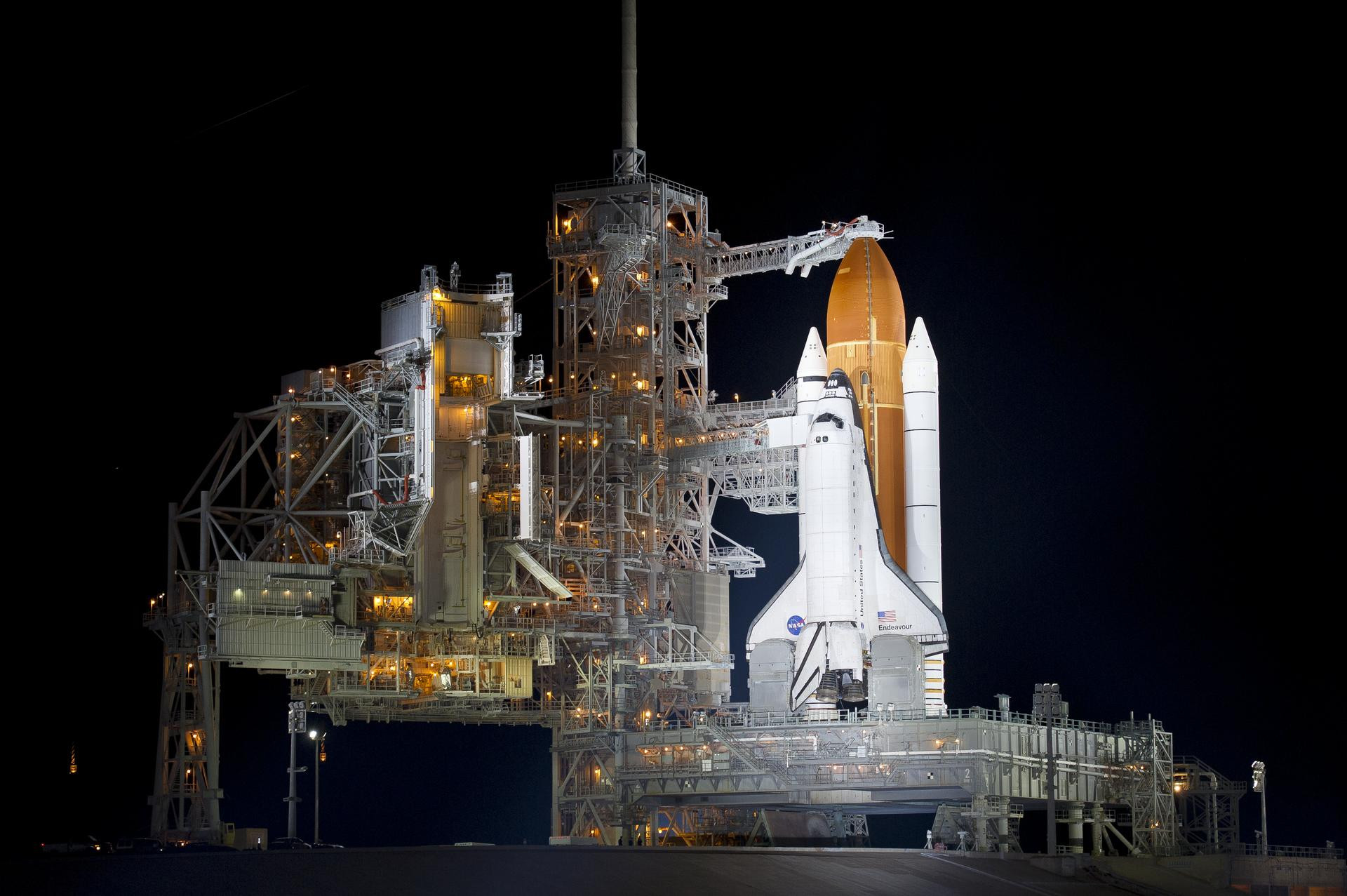 The space shuttle Endeavour is seen on launch pad 39a after the rollback of the Rotating Service Structure (RSS), Thursday, April 28, 2011, at Kennedy Space Center in Cape Canaveral, Fla.
The space shuttle Endeavour is seen on launch pad 39a after the rollback of the Rotating Service Structure (RSS), Thursday, April 28, 2011, at Kennedy Space Center in Cape Canaveral, Fla.
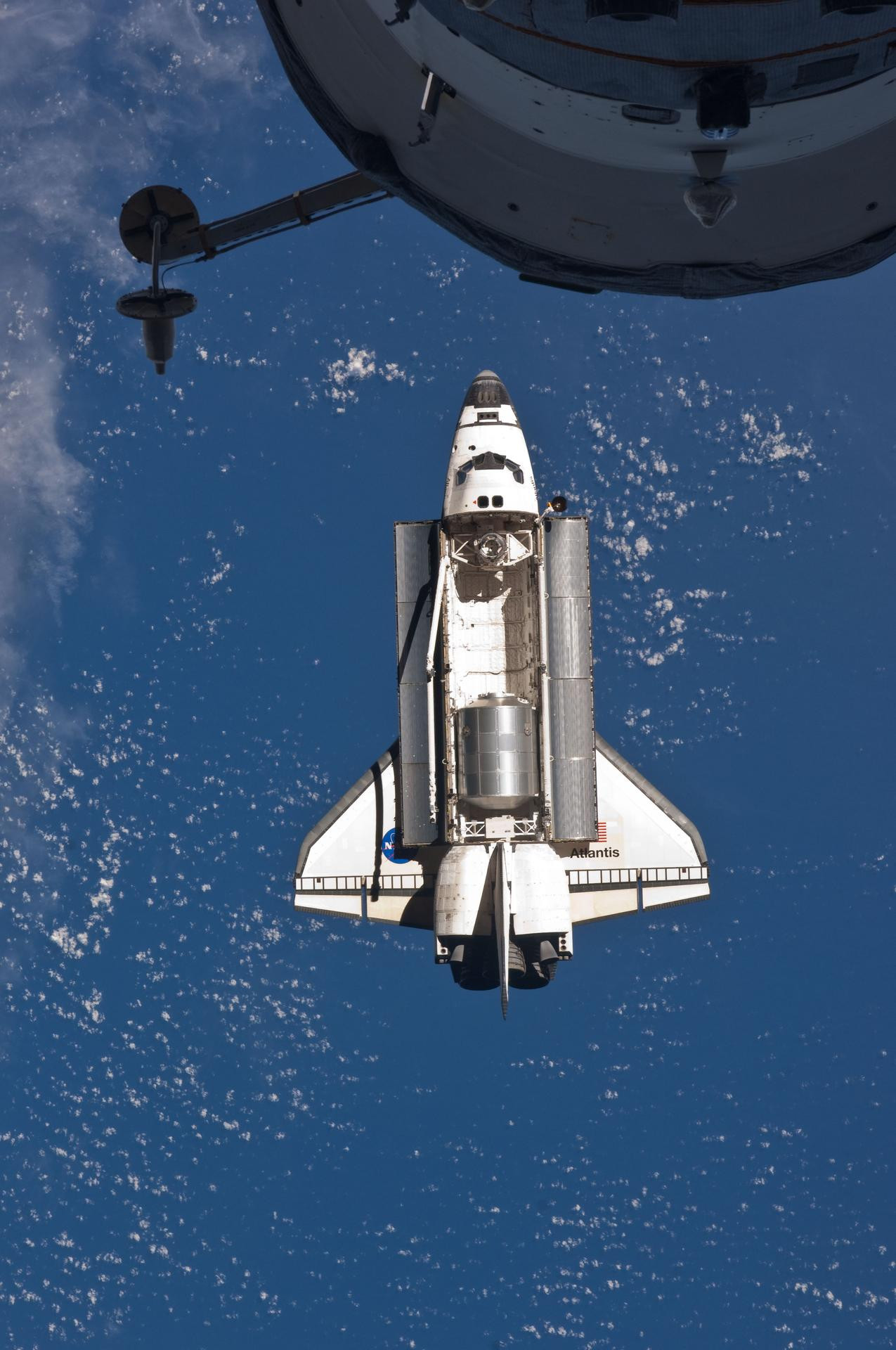 The space shuttle Atlantis is pictured prior to a perfect docking with the International Space Station at 10:07 a.m. (CDT).
The space shuttle Atlantis is pictured prior to a perfect docking with the International Space Station at 10:07 a.m. (CDT).
FAQ Section
1. How fast did the Space Shuttle travel?
The Space Shuttle typically traveled at approximately 17,500 miles per hour (28,000 kilometers per hour) while in orbit around the Earth, enabling it to maintain a stable orbit against Earth’s gravity.
2. What is the main factor determining the speed of a Space Shuttle?
The main factor determining the speed of a Space Shuttle is the need to counteract Earth’s gravity, maintaining a delicate balance between velocity and gravitational pull to stay in orbit.
3. How did the Space Shuttle achieve such high speeds?
The Space Shuttle achieved high speeds through powerful engines, strategic maneuvers including initial ascent using Solid Rocket Boosters and Space Shuttle Main Engines, and orbital insertion using the Orbital Maneuvering System.
4. What role did the Space Shuttle Main Engines (SSMEs) play in achieving high speeds?
The Space Shuttle Main Engines (SSMEs) provided significant thrust, efficient fuel consumption, and throttling capability, enabling the shuttle to accelerate from launch speed to orbital speed effectively.
5. How does atmospheric drag affect a Space Shuttle’s speed in orbit?
Atmospheric drag, although minimal in higher orbits, can still slow down a Space



